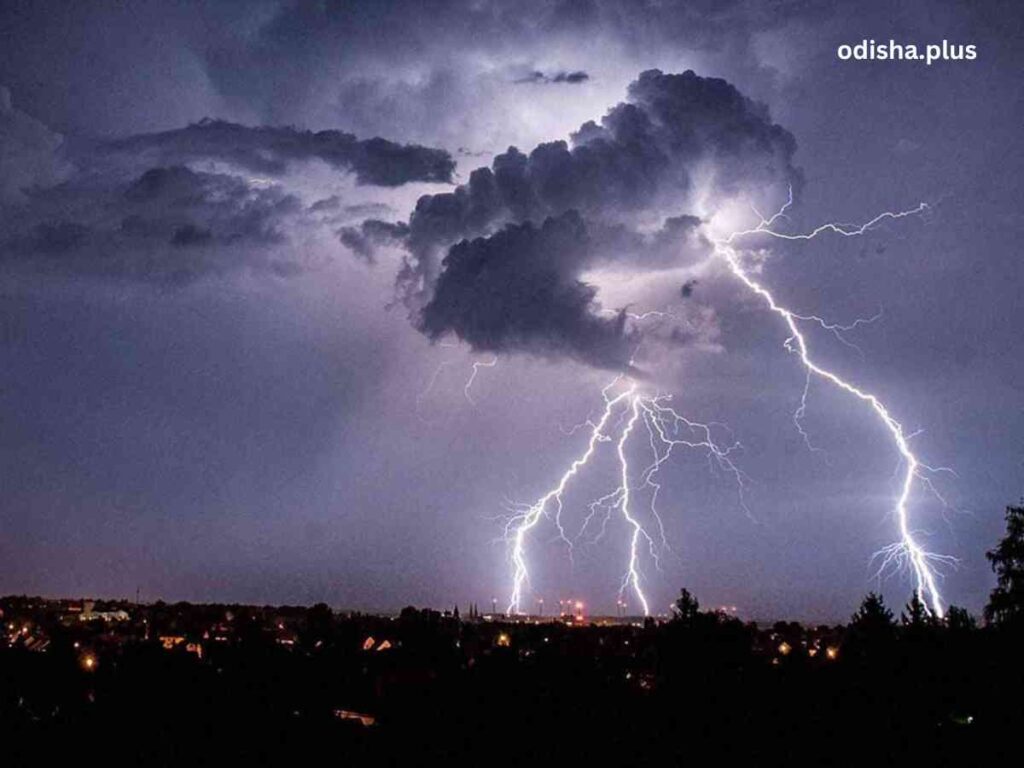The recurring lightning episodes in Odisha should serve as a catalyst for change, prompting a renewed commitment to protecting the lives and well-being of all citizens
Bhaskar Parichha

On Sunday, a series of lightning strikes tragically led to the deaths of six individuals across five different districts in the state of Odisha. This alarming incident has raised the total number of fatalities caused by lightning in Odisha to 15 within just a span of two days.
The situation is particularly concerning as it follows a grim report from Saturday, when nine individuals lost their lives due to lightning strikes in various locations throughout the state.
The impact of these weather-related incidents highlights the dangers posed by thunderstorms and the severe weather conditions that can accompany them. Local authorities and meteorological departments are likely to be on high alert, monitoring weather patterns and issuing warnings to prevent further loss of life.
The community is urged to take precautions during such weather events, as lightning can strike unexpectedly and with devastating consequences.
Chief Minister Mohan Charan Majhi has conveyed his sorrow regarding the unfortunate fatalities and extended his condolences to the affected families. According to the Chief Minister’s Office, two individuals lost their lives in Kendrapara district, while one person each perished due to lightning strikes in Balasore, Bhadrak, Jajpur, and Subarnapur on Sunday. Several others have sustained injuries due to the lightning strikes.
Government Aid
The Chief Minister announced a compensation of Rs 4 lakh for the families of each deceased individual. Expressing hopes for a swift recovery for the injured, he also stated that the state government will cover all medical expenses for those affected.
In addition, Revenue and Disaster Management Minister Suresh Pujari informed the media that district administrations are receiving regular updates regarding weather-related concerns.
“The number of lightning deaths is much higher in Odisha in comparison to other states. Around 300 persons die due to lightning strikes every year in the state. There are many reasons for such deaths, such as lack of adequate earthing systems in various buildings, including schools and residential homes,” said Pujari.
He mentioned that his department is coordinating with the School and Mass Education Department concerning the lack of earthing systems in numerous schools throughout the state.
Pujari also indicated that the state government plans to plant 2 million palm trees, referred to as ‘lightning arresters’, across the state to protect lives during lightning strikes. The government is committed to implementing measures aimed at reducing lightning-related fatalities to zero in Odisha.
This tragedy serves as a stark reminder of the vulnerabilities that communities face in the face of natural disasters, particularly lightning strikes, which can strike with little warning and devastating consequences. There is a pressing need to take proactive measures to enhance preparedness and response strategies that can mitigate the risks associated with such unpredictable events.
To address these dangers effectively, it is crucial for the government and relevant agencies to prioritize the development and implementation of comprehensive educational initiatives. These programs should aim to inform the public about essential safety protocols during thunderstorms, including the importance of seeking shelter, avoiding open fields, and staying away from tall objects that may attract lightning.
By equipping individuals with knowledge and practical skills, communities can foster a culture of safety and resilience that empowers citizens to act wisely in the face of impending storms.
Community Engagement
Moreover, the state must also consider the necessity of upgrading infrastructure to better protect at-risk communities from the impacts of natural disasters. This could involve investing in lightning protection systems for public buildings, enhancing early warning systems to provide timely alerts about severe weather, and improving drainage systems to prevent flooding during heavy rains. By taking these steps, the government can create a safer environment for its residents and reduce the likelihood of future tragedies.
In addition to these measures, collaboration with local organizations, schools, and community groups can further amplify the reach and effectiveness of educational campaigns. Engaging the community in discussions about disaster preparedness can foster a sense of collective responsibility and encourage individuals to take an active role in safeguarding their own safety and that of their neighbours.
By prioritizing awareness, infrastructure improvements, and community engagement, the government can work towards building a more resilient society that is better equipped to face the challenges posed by lightning strikes and other natural disasters in the future. The recurring lightning episodes in Odisha should serve as a catalyst for change, prompting a renewed commitment to protecting the lives and well-being of all citizens.
(The author is a senior journalist and columnist. Views expressed are personal.)



























